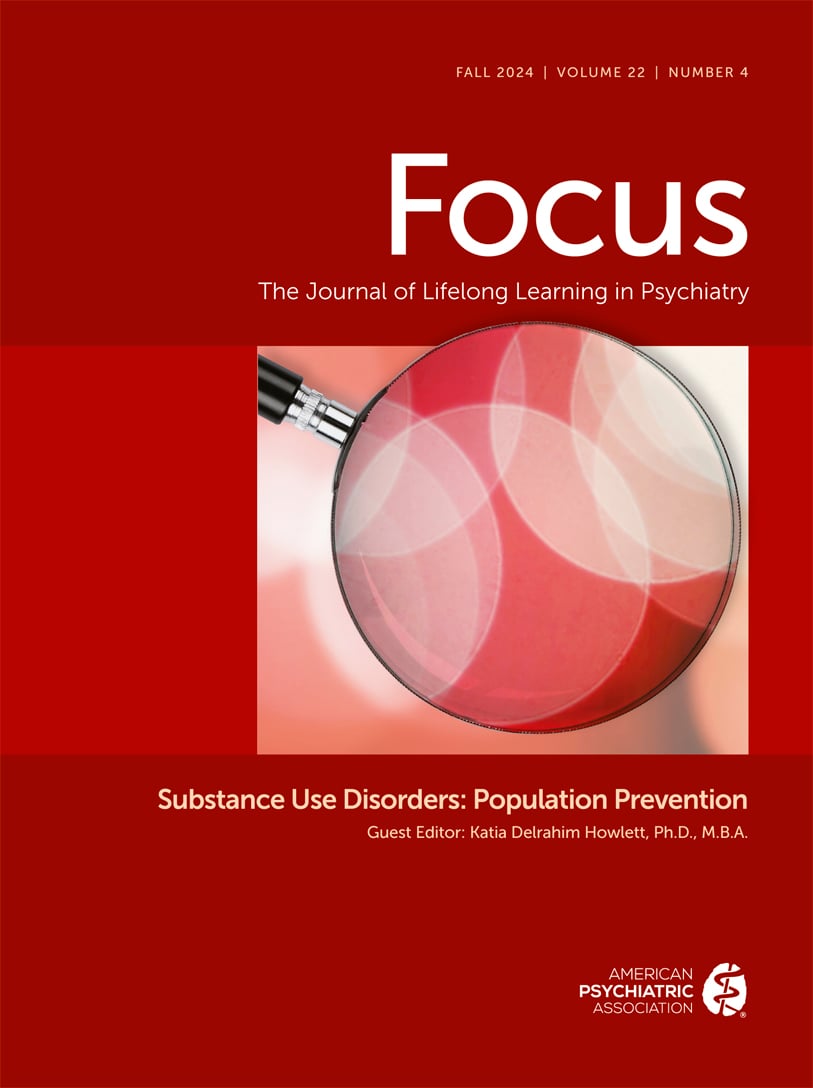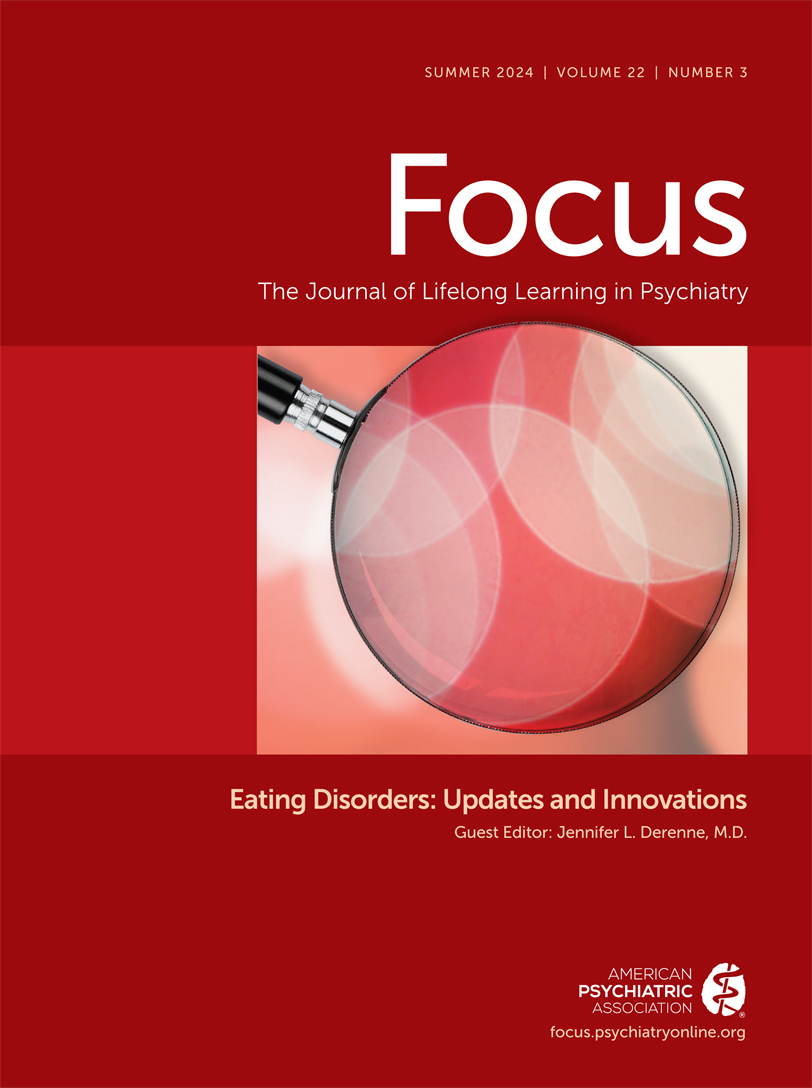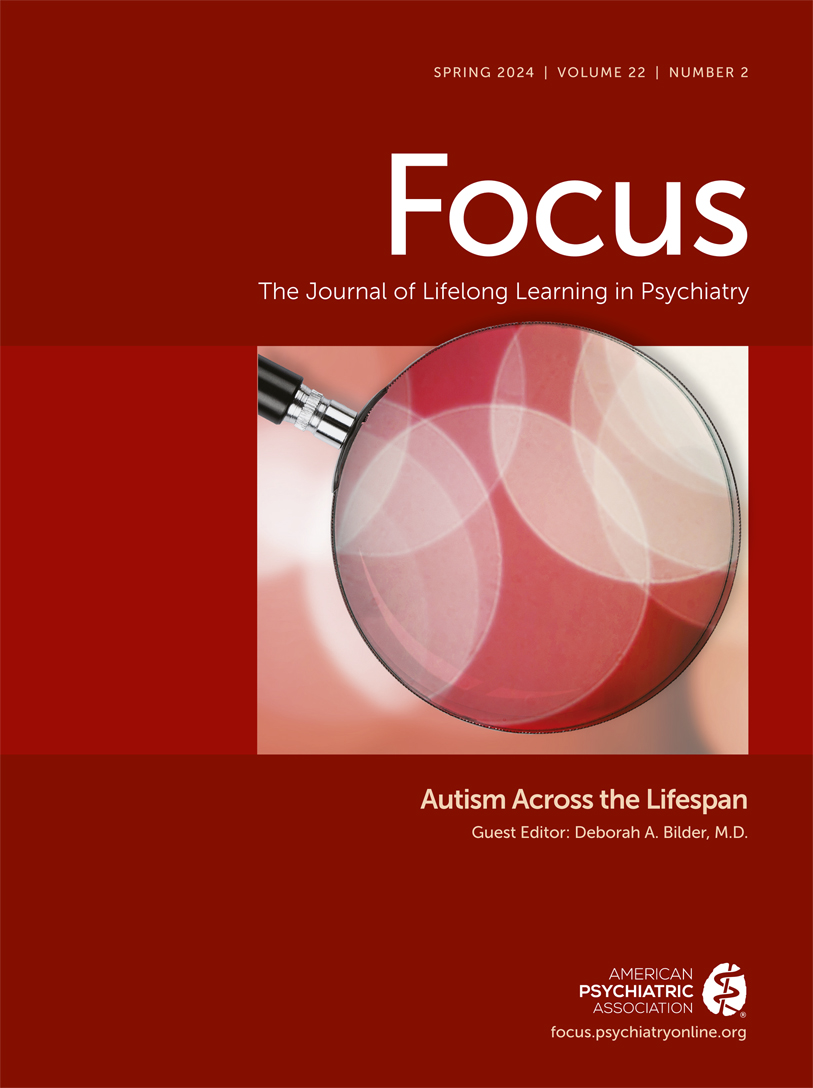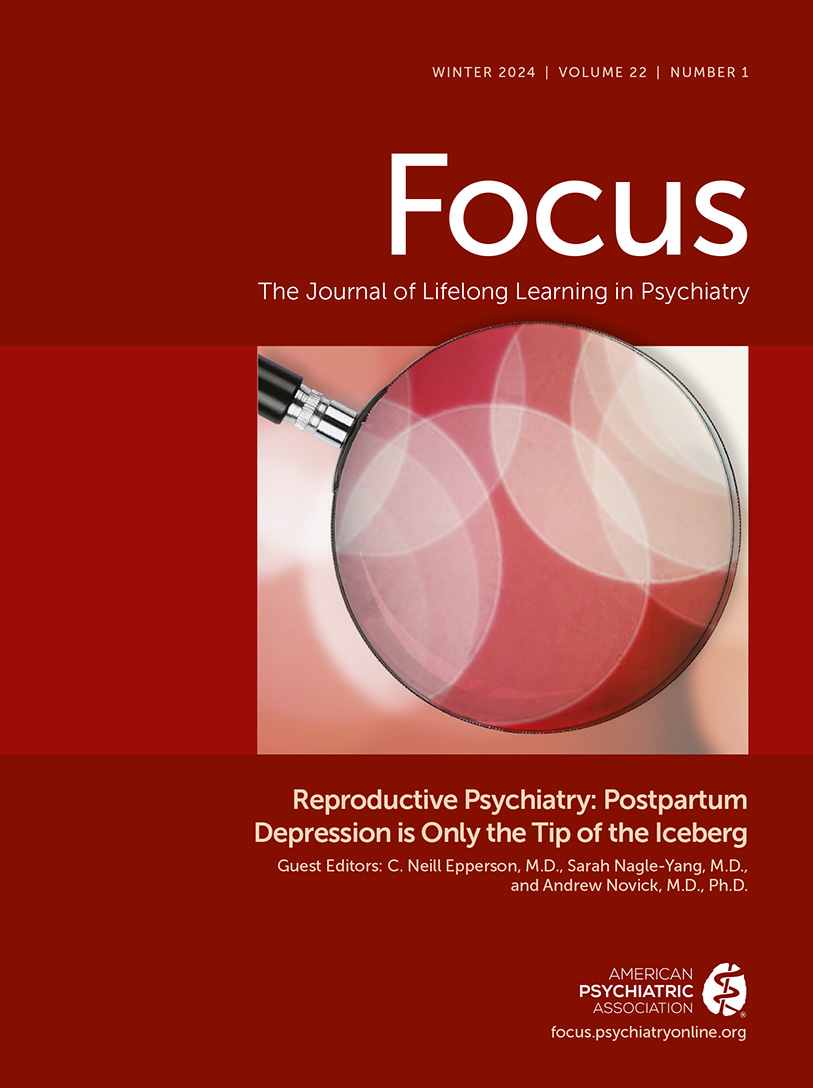Focus
- Volume 14
- Number 3
- July 2016
From the Guest Editor
Clinical Synthesis
Publication date: 01 July 2016
Pages300–307Few changes were made to the diagnostic criteria for schizophrenia in DSM-5. Schizophrenia is a chronic mental illness with positive symptoms (delusions, hallucinations, disorganized speech and behavior), negative symptoms, and cognitive impairment. ...
https://doi.org/10.1176/appi.focus.20160006Publication date: 01 July 2016
Pages308–314The first medication for schizophrenia was discovered serendipitously. Years later, it was shown that the medication worked by blocking dopamine, and to this date, all available antipsychotic medications also work by blocking dopamine. They differ, ...
https://doi.org/10.1176/appi.focus.20160009Publication date: 01 July 2016
Pages315–327Psychiatrists who work with patients with severe mental illness often are more focused on diagnosis, medical management, and psychopharmacology than on psychosocial treatments. Furthermore, many psychosocial interventions that show great promise may not ...
https://doi.org/10.1176/appi.focus.20160014Publication date: 01 July 2016
Pages328–332Schizophrenia is a neurodevelopmental disorder with a multifactorial etiology. Pediatric schizophrenia consists of early-onset schizophrenia (onset prior to age 18 years) and childhood-onset schizophrenia (onset prior to age 13 years). Adolescence has ...
https://doi.org/10.1176/appi.focus.20160007Publication date: 01 July 2016
Pages333–342Substance use disorders are prevalent co-occurring problems among people with schizophrenia, with lifetime rates approaching 80% in this population when tobacco use is taken into account. Substance use disorders are associated with significant adverse ...
https://doi.org/10.1176/appi.focus.20160008Ask the Expert
Patient Management Exercise
Ethics Commentary
Safety Commentary
Communication Commentary
Bibliography
Abstracts
Influential Publications
Publication date: 01 July 2016
Pages366–369Schizophrenia spectrum disorders attract great interest among clinicians, researchers, and the lay public. While the diagnostic features of schizophrenia have remained unchanged for more than 100 years, the mechanism of illness has remained elusive. There ...
https://doi.org/10.1176/appi.focus.140307Publication date: 01 July 2016
Pages370–377Aim: The first-episode psychosis (FEP) represents a critical period to prevent cardiovascular and metabolic morbidity decades later. Antipsychotic (AP)-induced weight gain is one modifiable factor in this period. The purpose of this study is to conduct a ...
https://doi.org/10.1176/appi.focus.140308Publication date: 01 July 2016
Pages378–386Background: Most of the 13 542 trials contained in the Cochrane Schizophrenia Group’s register just tested the general efficacy of pharmacological or psychosocial interventions. Studies on the subsequent treatment steps, which are essential to guide ...
https://doi.org/10.1176/appi.focus.140302Publication date: 01 July 2016
Pages387–395Background: There is increasing interest in elucidating the association of different childhood adversities with psychosis-spectrum symptoms as well as the mechanistic processes involved. This study used experience sampling methodology to examine (i) ...
https://doi.org/10.1176/appi.focus.140301Publication date: 01 July 2016
Pages396–402We have recently proposed a model for subtyping schizophrenia based on antipsychotic (AP) treatment response. Evidence suggests that APs, both old and new, are comparable in terms of efficacy; however, one AP, clozapine, is uniquely effective in one ...
https://doi.org/10.1176/appi.focus.140306Past Issues
View Issues Archive
Vol. 22 | No. 4

Vol. 22 | No. 3

Vol. 22 | No. 2
